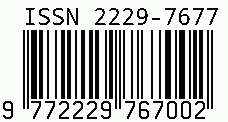
International Journal on Science and Technology
E-ISSN: 2229-7677
•
Impact Factor: 9.88
A Widely Indexed Open Access Peer Reviewed Multidisciplinary Bi-monthly Scholarly International Journal
Plagiarism is checked by the leading plagiarism checker
Call for Paper
Volume 16 Issue 3
July-September 2025
Indexing Partners



















Design Patterns for Secure Multi-Tenant Architecture in Financial Services
| Author(s) | Prashant Singh |
|---|---|
| Country | United States |
| Abstract | The financial services industry has been at the forefront of digital transformation, leveraging cloud computing, Software-as-a-Service (SaaS), and platform ecosystems to deliver scalable and agile services. However, the shift towards cloud-based multi-tenant architectures introduces significant security, privacy, and compliance challenges, particularly in an industry governed by stringent regulations such as GDPR, PCI-DSS, and FFIEC guidelines. Designing a secure multi-tenant architecture requires careful balancing of tenant isolation, data protection, access control, and system performance. This paper presents a comprehensive study of design patterns specifically tailored for secure multi-tenant deployments in financial services, emphasizing technical strategies such as tenant-isolated network zones, fine-grained Identity and Access Management (IAM), end-to-end encryption, container orchestration using Kubernetes with namespace isolation, and database sharding. A secure multi-tenant architecture must support the logical and sometimes physical isolation of tenant data while ensuring efficient resource utilization. The choice between shared schema, separate schema, and separate database models dramatically impacts security postures and performance metrics. Furthermore, advanced techniques such as tenant context propagation, policy-based access controls, centralized audit logging, and real-time threat detection are critical enablers in safeguarding sensitive financial data. This research methodically evaluates several established and emerging design patterns, such as the Policy Enforcement Point (PEP) pattern for security control, the Tenant Context Injection pattern for multi-tenant request routing, and the Audit Trail pattern for regulatory compliance. Simulations were conducted in a hybrid cloud environment to analyze the trade-offs between different tenancy models under varying workloads and tenant profiles, considering factors like data breach probability, resource consumption, response latency, and audit compliance scores. Key results highlight that hybrid tenancy models—combining logical isolation at the application layer with container-level isolation at the infrastructure layer—yield superior security and scalability without significant performance penalties. Patterns based on dynamic policy enforcement and role-based multi-tenant access control (MT-RBAC) further enhance resilience against cross-tenant attacks. This paper also discusses operational challenges such as key management in multi-tenant encryption models, tenant metadata management, secure onboarding and offboarding of tenants, and the role of service mesh architectures in improving tenant-specific traffic segmentation. The findings and technical insights derived from this work provide a structured approach for architects, developers, and CISOs in the financial services sector to build and evaluate secure multi-tenant systems. The paper concludes with future directions, suggesting the integration of zero-trust architectures and confidential computing to further harden financial multi-tenancy in upcoming deployments. |
| Field | Engineering |
| Published In | Volume 10, Issue 4, October-December 2019 |
| Published On | 2019-10-10 |
| DOI | https://doi.org/10.71097/IJSAT.v10.i4.5507 |
| Short DOI | https://doi.org/g9mvvt |
Share this


CrossRef DOI is assigned to each research paper published in our journal.
IJSAT DOI prefix is
10.71097/IJSAT
Downloads
All research papers published on this website are licensed under Creative Commons Attribution-ShareAlike 4.0 International License, and all rights belong to their respective authors/researchers.

